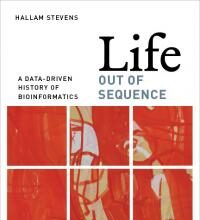 Several companies with roots in the Health Information Management (HIM) sector have emerged in recent years to address the gaps and limitations associated with most EHR deployments. Although some of these companies have been around for years, and are sometimes incorrectly “boxed” as providing commoditized services in the areas of transcription and release of information services, several
Several companies with roots in the Health Information Management (HIM) sector have emerged in recent years to address the gaps and limitations associated with most EHR deployments. Although some of these companies have been around for years, and are sometimes incorrectly “boxed” as providing commoditized services in the areas of transcription and release of information services, several
 Several companies with roots in the Health Information Management (HIM) sector have emerged in recent years to address the gaps and limitations associated with most EHR deployments. Although some of these companies have been around for years, and are sometimes incorrectly “boxed” as providing commoditized services in the areas of transcription and release of information services, several have developed exceptional new technology in the fields of clinical language comprehension and analytics that is highly relevant for the business objectives of the most progressive health systems.
Several companies with roots in the Health Information Management (HIM) sector have emerged in recent years to address the gaps and limitations associated with most EHR deployments. Although some of these companies have been around for years, and are sometimes incorrectly “boxed” as providing commoditized services in the areas of transcription and release of information services, several have developed exceptional new technology in the fields of clinical language comprehension and analytics that is highly relevant for the business objectives of the most progressive health systems.
The unique ability of certain firms to impact the evolution of the clinical documentation and analytics landscape stems from:
- The much broader scope of data they can access and analyze due to their ability to source and organize both structured and unstructured clinical data.
- Their position at the middle of the RCM value chain where clinical data capture and analysis intercept with complex regulatory and financial concepts that are designed to align reimbursement with the appropriateness of care being delivered.
- Their potential to rationalize “siloed” functions in health systems related to case management, care coordination, utilization review, and compliance at a time when providers are responding to new reimbursement and risk-shift models that require them to operate more like payers.
Much of the investment and consolidation activity has occurred during the last 2-3 years and has been focused on natural language processing (NLP) and computer assisted coding (CAC). Although the initial focus for these newer technologies has largely been focused on coding and the impending move to ICD-10, these advanced technologies have the potential to impact far more than the traditional coding/revenue cycle management workflows and open the door to a more pervasive presence across the provider’s case management, utilization review, and care coordination functions. As we survey the current landscape, we expect the leading vendors (e.g., Optum, Precyse, 3M, Nuance, and M*Modal) will continue to push their products and services heavily into the following categories:
- Natural Language Processing (NLP): Advanced NLP technology capable of comprehending vast amounts of unstructured data “locked” in dictated and transcribed notes. NLP is critical to gaining a comprehensive view of key clinical and financial elements.
- Clinical Documentation Improvement (CDI): Incorporation of the latest clinical documentation best practices and coding guidelines within the end-users workflow to ensure optimal documentation granularity and compliance concurrent to the patient visit. CDI allows for real-time alerting of documentation deficiencies and tracking of various quality metrics (e.g., Core Measures, SOI, ROM, etc.) for compliance and bench-marking purposes.
- Clinical Data Organization and Analysis: The ability to search, tag, and map the entirety of structured and unstructured data sources in a common organizational framework, or coded “language” such as SNOMED. The inability to map data to common standards makes it impossible to expose data to rules engines and analytics capabilities that foster clinical and business understanding.
- Computer Assisted Coding (CAC): Next generation CAC technology capable of supporting a wide range of clinical chart types and care delivery settings, particularly within the inpatient arena. CAC technologies that can automate more complex coding environments are well-equipped to drive greater automation and information dissemination across the provider’s entire organization.
- Workflow-Centric Functionality: Facilitate an intelligent exchange of clinical documentation that addresses the unique workflow and functional requirements of a wide range of end-users, including physicians, nurses, care/case managers, CDI specialists, coders, administrators, CIOs/CMIOs, and healthcare informaticists that interact, modify, and interpret the universe of available data in vastly different ways.
- Clinician Engagement and Education: The ability to engage and influence critical care documentation processes is extremely important to creating a “culture” of clinical documentation completeness and accuracy.
Over time we expect innovative companies will combine the above capabilities into a single, integrated HIM product and services platforms. Our recent research on Clinical Intelligence identified HIM vendors that provide certain component offerings, and that currently only a select few possess the technological capabilities and scale to potentially launch a comprehensive suite of HIM products and services.
Let us know if you’d like a complimentary copy of this recently published report, and let us know what you think.
(health information / shutterstock)









